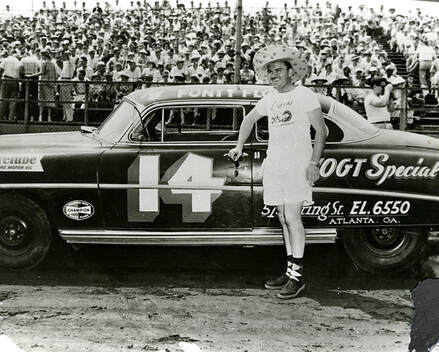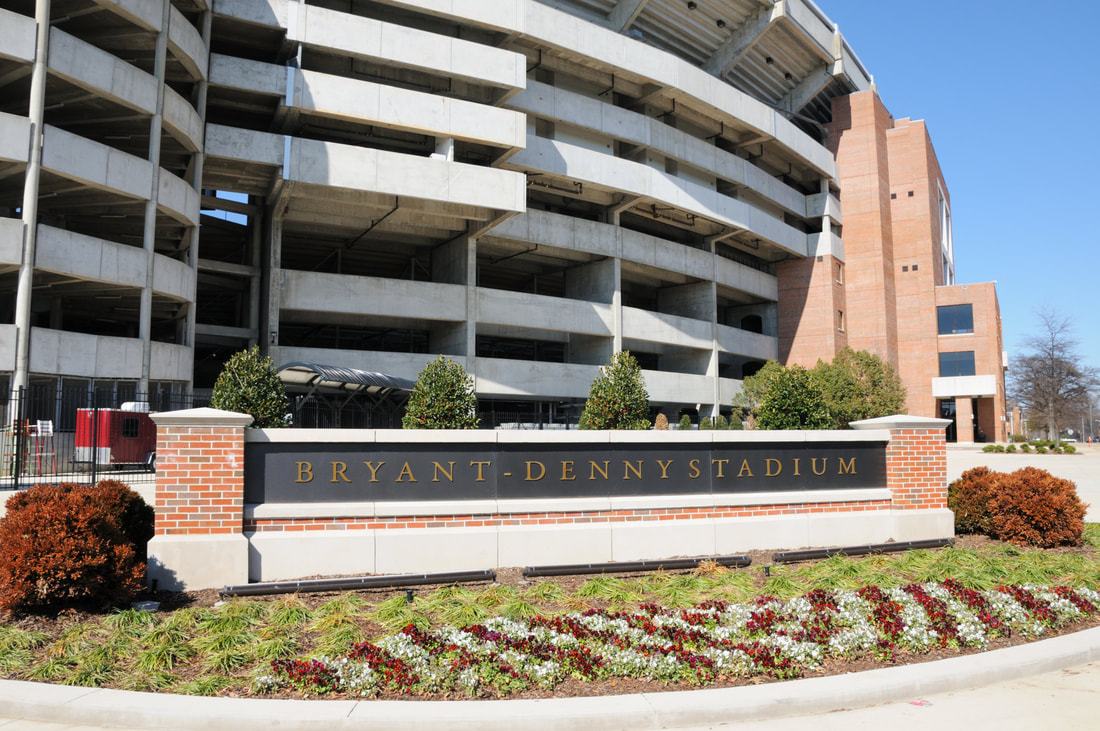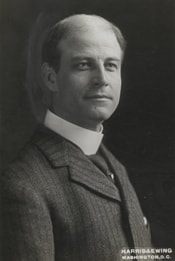 Truman Fontel "Fonty" Flock poses next to his racecar. [Photo/Frances Flock/Encyclopedia of Alabama]
Truman Fontel "Fonty" Flock poses next to his racecar. [Photo/Frances Flock/Encyclopedia of Alabama] Supporters of Prohibition, or the Noble Experiment, pushed for a dry Alabama with goals of increased health and safety and reduced violence. As Richmond P. Hobson declared to the House of Representatives in 1914, alcohol is “a protoplasmic poison” and “an insidious, habit-forming drug.” The amendment backed by Hobson did not receive a two-thirds majority, but his speech encompassed the key moral qualms with liquor consumption that would eventually lead to national prohibition.
The 18th amendment paved the way for a plethora of legal loopholes to meet the
ever-present drive to enjoy liquor. Individuals could purchase the materials necessary for a DIY distillery at their local hardware stores and could find the instructions to assist them at their local libraries. Churches also partook in the subversion of federal interest, intentionally ignoring notices from the grape industry that juice left alone for too long would ferment into wine.
However, the lack of regulation and safety standards caught up to amateur distilleries. Still raids could quickly turn deadly. Tom Allison’s Moonshine Memories includes stories from Federal Prohibition Officer Earl Snarr, who killed violators in Alabama and Florida during raid shoot-outs. Distilleries could also kill without federal interference. Shortcuts in the bootlegging process would create methyl or wood alcohol instead of the desired ethyl alcohol. Methyl is highly toxic, causes extensive damage to the optic nerve, and can lead to death in amounts as little as one ounce. Stills were also always at risk of exploding due to inconsistent techniques and flammable liquids over open flames.
For better or worse, Prohibition built careers, from moonshiners all the way to NASCAR drivers. Fort Payne native Truman Fontel “Fonty” Flock’s racing career can be attributed to the black market of moonshine. When he was a teenager, he delivered illegal whiskey via bicycle, and soon upgraded to automobiles. His experience evading the sheriff unknowingly trained him to become a NASCAR legend, winning various races from 1940 until his retirement from racing in 1957. Fonty was inducted into the NASCAR Hall of fame in 2014.
As a whole, Prohibition failed in its goals and sparked a greater public interest to
consume alcohol. With one season of stadium alcohol sales finished at the University of Alabama, it is important for officials to keep the same goals from Prohibition in mind while actually delivering on results. Some studies on fan health and safety offer promising data to back up Alabama’s decision to sell alcohol, with a 35 percent decrease in game day arrests at West Virginia University and a reduction in alcohol-related incidents at the University of Minnesota. However, statistics from other studies raise concern, such as an increase in violent behavior at rivalry games at University of North Carolina at Chapel Hill. Hopefully UA falls into the former category of stadium alcohol sales improving the overall fan experience without compromising their collective well-being.
To read more about the agreement between UA Athletics and Tuscaloosa City Council, click here. Representative Hobson’s full speech from December 22, 1914 can be found here. For a deeper history of the Prohibition Era, click here. Excerpts from Moonshine Memories can be found here, and to find out how Fonty’s brother Tom raced with a monkey as a passenger, read the family history here. In-depth research on in-stadium alcohol sales by Mark Mitchell and Robert D. Montgomery can be found here.
About the Author



 RSS Feed
RSS Feed